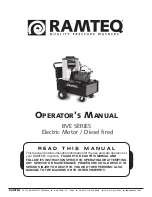
SOI/DT 2007-11 dmm
4/14
599 70 40-15
1
PURPOSE OF THIS MANUAL
The purpose of this manual is to provide service engineers who already have the basic skills necessary to
repair washing machines with specific information concerning the drying system featured in washer-dryers
with the HEC cabinet.
For information regarding the structural characteristics and the washing systems, refer to Service Manual:
N° 599 37 47-13 for washer-dryers HEC-RIM
N° 599
37 67-82
for washer-dryers HEC-ARCHED
For more detailed information regarding each model:
Circuit
diagrams
Exploded
views
Spare parts lists
Functional aspects and diagnostics
refer to the Service Manuals and Service Notes issued for each specific model/function.
2 PRECAUTIONS
Repairs to electrical appliances must be carried out by qualified persons only.
Before accessing internal components, always remove the plug from the power socket.
Where possible, measure the resistance (ohms) rather than directly measuring voltage or current.
Certain metal components may have sharp edges. Care should be taken to avoid cuts or abrasions.
Before laying the appliance on its rear or side, always drain the residual water using the special
drainage device located alongside the drain filter.
Never lay the appliance on its right side (where the electronic control system is located). This may
cause water to leak from the detergent dispenser drawer and onto the electrical components, which
might be short-circuited.
After effecting repairs, always test the appliance.
































